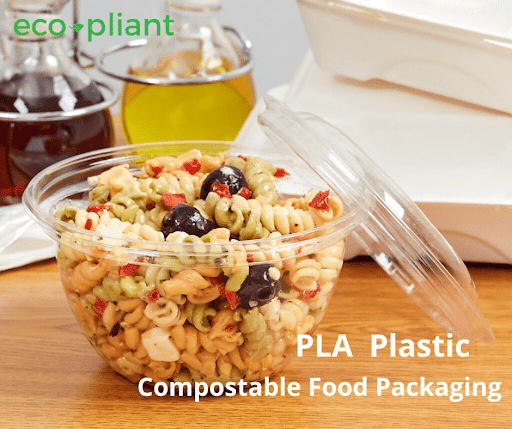
PLA (Polylactic Acid): An In-depth Material Summary
Bioplastic came to be out of necessity and demand, but at first, it came as science.
The first synthesized polymer was created by chemist Théophile-Jules Pelouze in 1845 ¹, but later on, the claim of “discovery” was bestowed upon a scientist by the name of Wallace Corothers in the 1920s. Corothers was no stranger to the invention, he had previously invented nylon.
While working for Dupont he was already looking for a more environmentally friendly plastic in the 1950s, and that is when he “discovered” PLA.
Dupont patented his new material shortly thereafter, but at the time it was too expensive to manufacture, but in the late 80s, a company by the name of Cargill began producing it.
The search for a better plastic it seems had begun long before the modern need for a better plastic came into the light.
PLA plastic is used in medical, automotive, agriculture, textile, electronics, and more, including single-use items such as takeout and delivery eco food packaging.
Degradability, recyclability, compostability, and sustainability currently all play into how food product packaging is produced.
What is PLA?
“Polylactic acid (PLA) is a linear, aliphatic polyester synthesized from lactic acid monomers.”²
“PLA is produced from condensation polymerization of lactic acid monomers, which are generated from natural and renewable resources, e.g., maize, tapioca, and sugar cane by a bacterial fermentation process.” ³ ²
“PLA could be easily called the most popular bioplastic on the market.”
Bioplastic by definition is, “a type of biodegradable plastic derived from biological substances rather than from petroleum.”
PLA is created by renewable organic biomass sources and converted into a thermoplastic polymer using the same type of manufacturing facilities as petroleum-based plastics but in a more environmentally friendly way.
The final products are non-toxic, eco-friendly, and durable alternatives to petroleum-based plastics that can potentially have harmful effects on the environment.
How is PLA Made?
The process starts with biomass.
- Corn
- Cassava
- Sugarcane
- Sugarbeet
From these products, the starch or sugars are processed out, and put into a fermenting tank until a certain level of bacterial fermentation has occurred, where at this point the fermenting process is halted. The final stage of this process is a solid pelleted polymer that can be “thermoformed” into a cup or carry-out container.
- Non-toxic
- Biodegradable
- compostable/industrial …needs special composting facilities
Food Packaging
The consumer demand for environmentally friendly food packaging continues to push the industry in the direction of safe and conscious choices in the products used.
Compostable (industrial), non-toxic, and eco-friendly, PLA plastics are continually evolving and are a go-to in cold beverage disposable cups and perfect for foods such as green salads, pasta salads, and desserts for grab-and-go, and to-go, and delivery.
PLA Blends
When working with plastic, the end result is about function and usability, and often as with PLA, there may be a need to add an additive to the plastic matrix to achieve a certain functionality.
For example, when using PLA and talc combination to create a material that can be used for a take-out fork. Talc is added at a certain percentage to increase flexural strength and tensile strength. Taking something that is brittle and giving it some flex as well as reinforcing it to make it stronger.
More Bioplastic
“The global polylactic acid (PLA) market is projected to grow at a CAGR of 14.8% between 2021 and 2026.”(Polylactic Acid (PLA) Market Size, Share, Growth, Forecast 2022-2027 )
Currently, the rise in demand for more eco-friendly plastic alternatives is growing. Pollution control and eco-friendly demands by consumers for easing the strain on the planet are fueling a global market for PLA products.
Growth in the bioplastic plastic market will continue to rise as long as there is a demand for it, and there doesn’t seem to be an end to that any time soon.
Growing along with the need for plastic is the need for facilities to compost the products and the need for products that can be home composted and still have all usability features consumers want.
The future is likely to see more eco-friendly, home-compostable, and easier recyclable compositions of this popular bioplastic called PLA.
¹ PLA Synthesis. From the Monomer to the Polymer
²Polylactic Acid – an overview | ScienceDirect Topics
³Polylactic acid (PLA): Improve it, use it, and dump it faster :: BioResources

